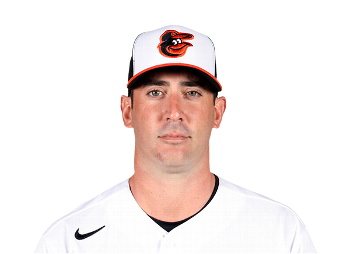A partial or complete tear of the ulnar collateral ligament (UCL) can be devastating to a pitcher of any level. This ligament is the main stabilizer for the arm during the throwing motion. Research shows that between 28 and 42 Nm of stress goes through the UCL with each pitch thrown. The problem is that this is usually greater than the 32 Nm of force that the UCL can withstand during cadaveric testing. Based on these numbers, the UCL should tear on just about every pitch that is thrown. Obviously it does not, otherwise baseball would have died out as a sport a long, long time ago. The opposing forces of the muscles surrounding the elbow as well as the core, leg, and rotator cuff, help dissipate the stress to the UCL and allow pitchers to throw well over 100 pitches per game without problems.
What is Tommy John surgery?
Tommy John
was a pitcher for the New York Mets in 1974 when he suffered a tear of the
UCL. This injury was previously career
ending (see Sandy Koufax) until Tommy met with Dr. Frank Jobe. Dr. Jobe designed a surgery using a tendon
from another muscle in the forearm to reconstruct the UCL. The initial odds were 1:100 according to Dr.
Jobe, but the procedure was a success as Tommy John was able to continue to
pitch until 1989.
Rehabilitation after Tommy John
From surgery
to full return to pitching takes approximately 1 year. As we saw with Steven Strasburg, even when
they return the first year, there should be a pitch and inning count that must
strictly be followed to avoid placing the pitcher at risk of re-tearing the
ligament.
Platelet-rich Plasma
Platelet-rich
Plasma (or PRP) is a portion of the blood that contains platelets, which have
healing elements and growth hormone present.
The person has blood drawn, which is then placed in a centrifuge to
separate the red and white blood cells from the plasma. This PRP is then injected into the injured
area to promote healing. Looking for more info on PRP??? Check out this
interview with a doctor in Cherry Hill, NJ http://3dpt.com/resources/medical-minute/148-dr-greenberg-4-29-2013
Matt Harvey’s decision

It is possible to rehabilitate and heal the damaged ligament with medical techniques today. A study by Podesta, et al, from the American Journal of Sports Medicine took 34 pitchers with partial UCL tears and treated them with PRP and a comprehensive rehab program. 88% of these pitchers made it back to their prior level of play without reinjury, with an average return to play time of 12 weeks.
When Matt
Harvey first was diagnosed with a partial tear of the UCL, most Mets fans that
I know were crushed that their franchise pitcher and the future of the club
would be shelved until at least the end of 2014. The incorporation of PRP into treatment
options gives Matt the chance of avoiding surgery, and pitching at the same
level at the start of next season. In
addition to PRP, Matt will work with biomechanics experts and a team of
physical therapists and strength and conditioning coaches to pick up flaws in
his delivery as well as muscular tightness or weakness that place the UCL at an
increased risk of injury.
All things
considered, the conservative option is always preferred over surgery. In this case, Matt has an 88% chance of
rehabilitating, finding flaws in his mechanics and delivery, and making himself
into a better pitcher than he was before coming back from this injury. It is not a guaranteed success, but Matt
should be back on the mound on opening day next season better than ever for the
NY Mets.
Ken Guzzardo, PT, DPT, OCS, SCS
Lit cited
Podesta, L,
et al. “Treatment of partial ulnar collateral ligament tears in the elbow with
platelet-rich plasma”, American Journal of Sports Medicine, 2013, Jul, 41(7):
pp 1689-94

No comments:
Post a Comment
Questions or comments? Let us know below!